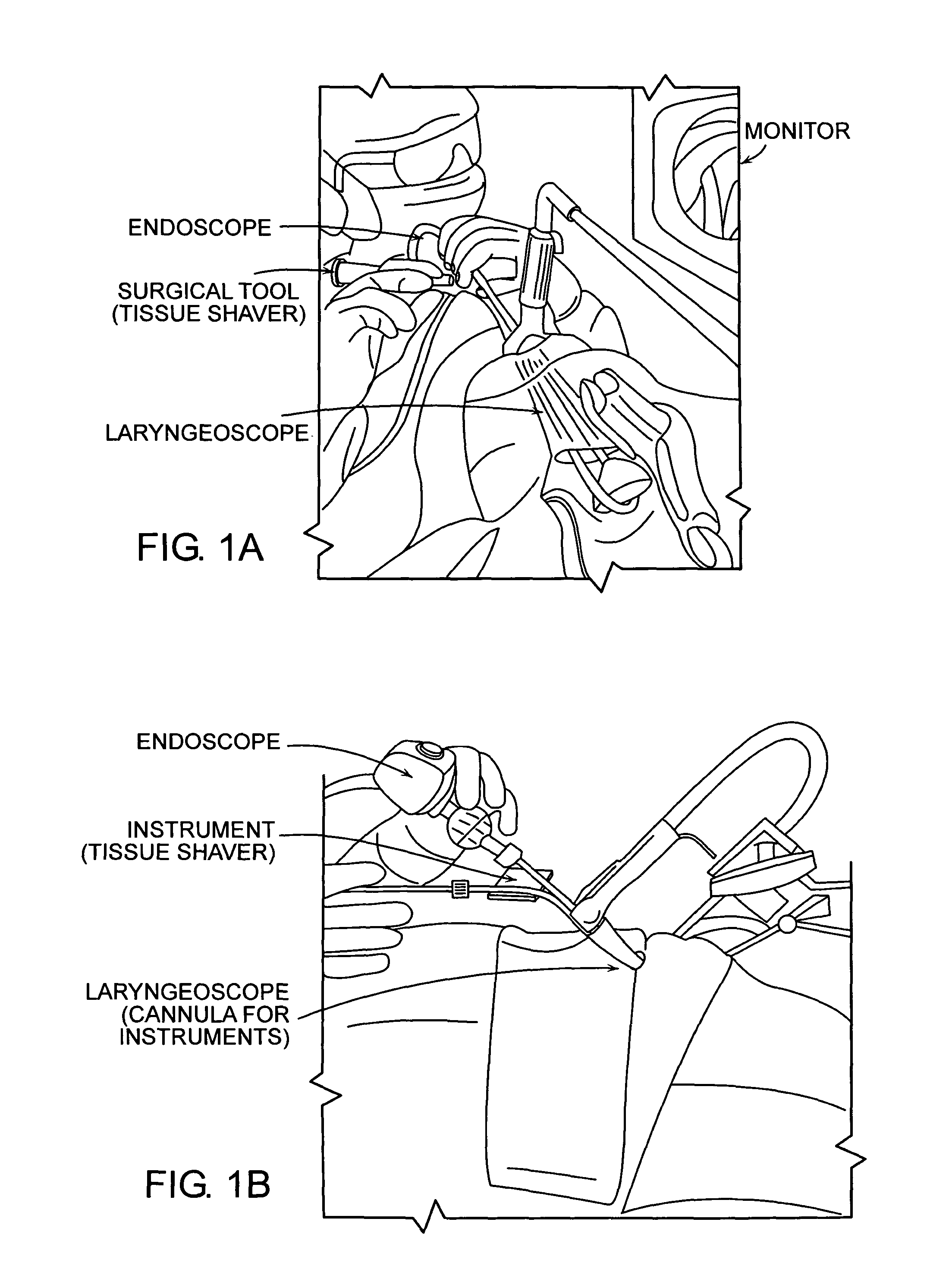Devices, systems and methods for minimally invasive surgery of the throat and other portions of mammalian body
a technology of surgical techniques and surgical methods, applied in the direction of surgical instrument support, catheters, applications, etc., can solve the problems of limiting the ability of surgeons to accurately perceive the force/interaction between instruments and tissues, limiting the surgeon's ability to achieve the effect of achieving the effect of reducing the risk of surgical complications
- Summary
- Abstract
- Description
- Claims
- Application Information
AI Technical Summary
Benefits of technology
Problems solved by technology
Method used
Image
Examples
Embodiment Construction
[0047]The present invention provides improved methods, systems and devices / surgical instruments for performing minimally invasive techniques including surgery, surgical procedures, treatment and / or diagnostic procedures. In particular, the present systems and devices are suitable for performing minimally invasive techniques whereby the operable end provided is capable of moving with degrees of freedom comparable to that seen when using open surgery techniques. In addition, systems, methods and devices of the present invention are particularly suitable for performing minimally invasive techniques / procedures under what might be considered challenging conditions for conventional minimally invasive techniques. For example, some surgeries are more challenging than others due to the shape of the surgical site and / or the presence of other tissue proximal the surgical site that makes access to, and manipulation at, that site difficult. Still further, the route or path taken to gain access t...
PUM
| Property | Measurement | Unit |
|---|---|---|
| diameter | aaaaa | aaaaa |
| diameters | aaaaa | aaaaa |
| width | aaaaa | aaaaa |
Abstract
Description
Claims
Application Information
 Login to View More
Login to View More - R&D
- Intellectual Property
- Life Sciences
- Materials
- Tech Scout
- Unparalleled Data Quality
- Higher Quality Content
- 60% Fewer Hallucinations
Browse by: Latest US Patents, China's latest patents, Technical Efficacy Thesaurus, Application Domain, Technology Topic, Popular Technical Reports.
© 2025 PatSnap. All rights reserved.Legal|Privacy policy|Modern Slavery Act Transparency Statement|Sitemap|About US| Contact US: help@patsnap.com



